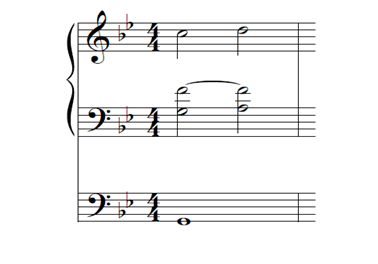
A syntonic comma is a succession of two tones which have the same tone name (hence syntonic) but have slightly different pitches (hence comma). The difference is about a fifth of a semitone, with a pitch ratio of 81/80. You can look it up here. Some occurrences of the syntonic comma sound bad and some cannot be avoided by the optimization algorithm. One unavoidable syntonic comma is described for Fugue in g, BWV 578 by J.S. Bach here.
First, let's expose the syntonic comma clearly. We isolate the two 'chords' in measure 50 of BWV 578 that make up the syntonic comma and slow them down:

We use the pitch assignment with a stable G and the F incurring a rising syntonic comma:
| F | C | G | D | A |
| F |
We use a loud stop for the F and a low volume stop for the remaining voices. First: four versions without reverberation:
(tone 'repetition')
(sudden pitch change)
(0.5 seconds pitch slide)
(1.5 seconds pitch slide)
Next: the same with reverberation:
(tone 'repetition')
(sudden pitch change)
(0.5 seconds pitch slide)
(1.5 seconds pitch slide)
On this website I make a distinction:
We have gone to some lengths here to expose the syntonic comma. The opposite is true for the actual pieces of music on this website. Did any awkward effect of the syntonic comma strike you when you first listened to BWV578?